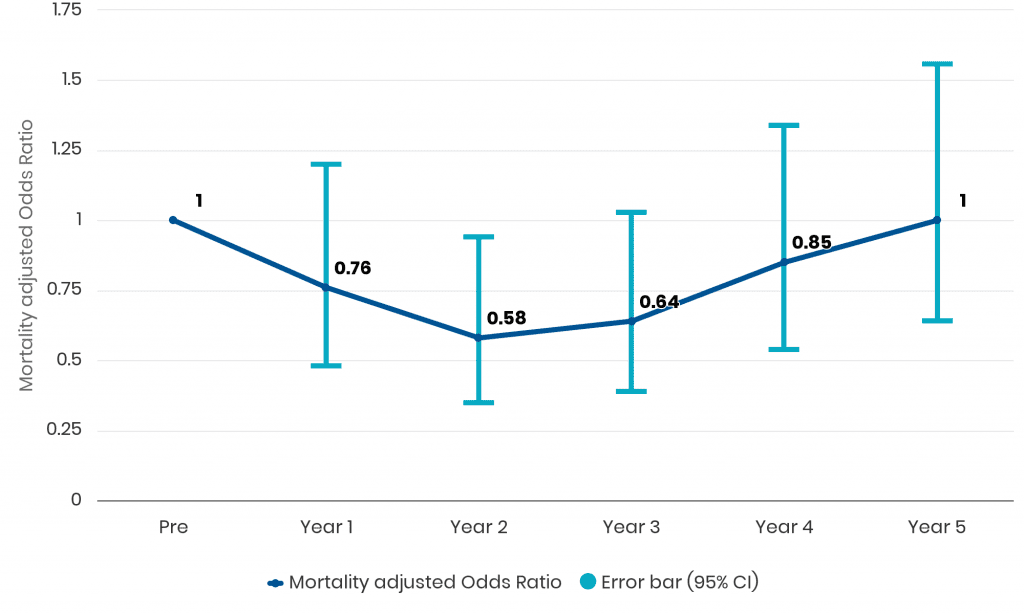Overview
The implementation of Structured Interdisciplinary Bedside Rounds (SIBR) significantly improved perceptions of interprofessional communication and workplace efficiency among residents and nurses. These findings support the value of structured interprofessional rounds in enhancing communication and operational efficiency in inpatient settings.
Objectives
To evaluate the impact of transitioning a medical unit to an Accountable Care Unit (ACU) on inpatient mortality rates.
Methods
The study used an observational pre-post design involving 12,158 consecutive inpatients with a mean age of 62.2 years. Conducted over six years, from August 26, 2013, to August 25, 2018, the intervention included:
•Geographic localization of the unit.
•Partnered nurse-physician unit leadership.
•Daily Structured Interdisciplinary Bedside Rounds (SIBR) involving nurses, physicians, pharmacists, and care managers.
Results
Risk-Adjusted Mortality Reduction
• Year 2: aOR = 0.58 (0.35-0.94)
• Year 3: aOR = 0.64 (0.39-1.03)
• Mortality returned to baseline in Years 4 and 5.
Unexpected Deaths
• Zero in Year 3.
• Sustained reduction below pre-implementation rates in Years 4 and 5 (~0.1% vs. 0.38%).
Conclusion
The geographic ACU with nurse-physician partnered leadership and daily SIBR effectively reduced mortality and unexpected deaths among inpatients, demonstrating the importance of structured team-based care models. However, maintaining these outcomes requires continuous focus and effort.
Additional Data


Compared to pre-implementation year, mortality, crude or risk adjusted, showed decline in Years 1, 2 and 3, reaching statistical significance in Year 2 (risk-adjusted odds ratio [aOR] = 0.58 [0.35–0.94]).
I hope you enjoyed reading these strong results. Unit outcomes like these are achievable within 3 to 6 months using a seasoned implementation methodology:
- skillful project management
- smooth training and launch, and a
- long-term partnership for sustainability.
One option to achieve similar results is to engage our 1Unit experts. Backed by 15 studies like this one, our work has received awards from The Joint Commission, CMS, Clinical Excellence Commission, IHI, BMJ, and the Society of Hospital Medicine.
Whether your unit(s) have current multidisciplinary rounds or not, our experts can guide your unit leaders to launch and sustain the best interdisciplinary teamwork and communication you’ve ever seen on a hospital ward.
This is not some ivory tower theory. Our methods have been toughened and refined worldwide. Everything we teach has been carefully tested over more than a decade, so we know it works.
Connect with us if you’d like the “Easy Button” to steadily reduce harm events, discharge delays, and patient and staff dissatisfiers.
Liam Chadwick, PhD



